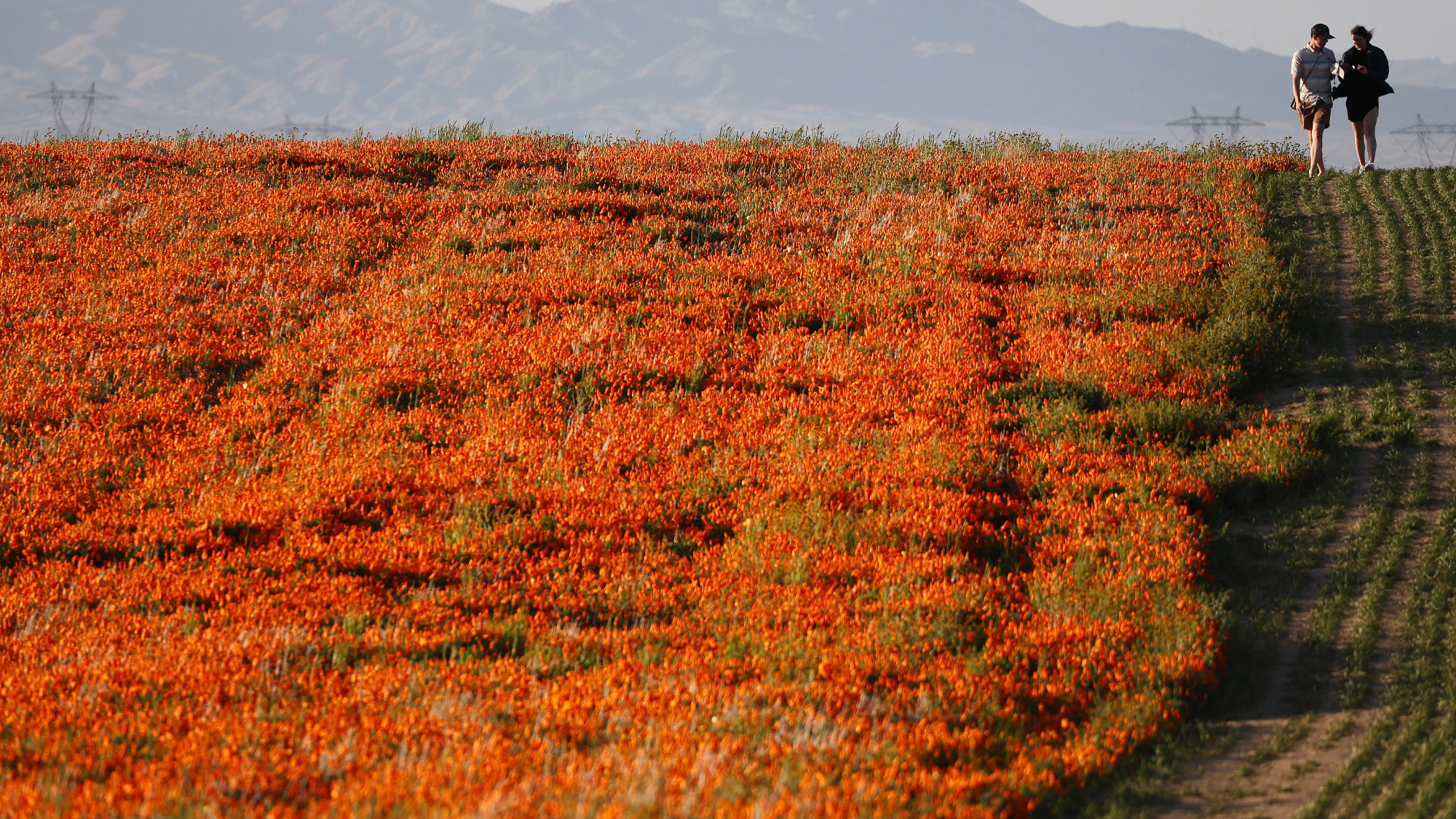

Following an usually wet winter in the West, California is beginning to emerge from a serious drought. The state, however, is now beautifully awash in wildflowers. The state is seeing a “super bloom,” similar to the Instagram famous super bloom of 2019.
A unique combination of sun, rain, temperature, and wind set the stage for the arrival of desert wildflowers in the late winter and early spring, according to the California Department of Parks and Recreation.
[Related: Powerful atmospheric river pummels California with even more rain and flooding.]
“California’s desert state parks are cautiously optimistic in expecting a ‘good’ to ‘better than average’ wildflower bloom this late winter and spring seasons depending on the continued weather conditions,” the department said on their website.
This super bloom only happens after particularly wet seasons, which typically follow years of drought. Many parts of California saw more rain in the first few months of this year than in all of 2022, according to local CBS affiliate KFMB.
During the dry years, many annual wildflower seeds lay dormant in fragile layers of soil. If enough rain arrives, they germinate and the flowers can burst through. The areas with blooms typically see large and dense qualities of wildfires covering the landscape and some of the most beautiful blooms are in desert landscapes. Depending on the region, California poppies, sand verbena, desert sunflowers, evening primrose, popcorn flowers or desert lilies could be growing.

In the Antelope Valley north of Los Angeles, California poppies gleam bright orange. During the 2019 super bloom, thousands of tourists and influencers came out to view the poppies, which led to the unfortunate trampling of some of the flowers. New rules for both safety and conservation have been put in place in Lake Elsinore to protect the poppy bloom in nearby Walker Canyon. In an advisory on how to see the flowers safely and responsibly, California State Parks Director Armando Quintero asked visitors not to “doom the bloom.” Visitors are urged to stay on trails and not pick any of the flowers.
The poppies aren’t the only stars of the season. In California’s Central Valley, Purple phacelia and yellow goldfields abound at Carrizo Plain National Monument, a grassland roughly 70 miles west of Bakersfield.
[Related: Don’t go to Death Valley looking for a ‘Super Bloom.’]
This year’s bloom is an opportunity for scientists who study rare plants to study ecosystems that have been lost to development or agriculture over the years. Heather Schneider, a rare plant biologist with the Santa Barbara Botanic Garden told The New York Times that the sustained colder temperatures and precipitation would likely give researchers more time to study wildflowers than in past wet years. “This is how we feed our souls,” said Schineder.
Since different flower species thrive in subtly different conditions and times of year, botanists have predicted that this year’s wildflower season may extend through the spring and into the summer, especially in higher elevations.
To safely and respectfully view the superbloom, visitors can consult the state’s safety tips and consult the bloom calendar for updates on what is blooming where.
